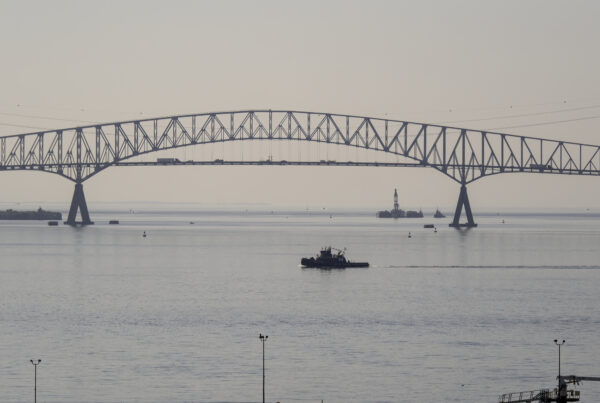Mark your calendars. On February 12, we’ll be entering the year of the Ox. Did somebody say bull market? It’s been said a million times by a thousand different people, but we’re going to repeat it, ‘2020 has been a year like no other’. So why should the run up and period of Chinese New Year be any different?
How Big Is Chinese New Year?
What are your shipping plans heading into Chinese New Year? Chinese New Year isn’t like any other holiday. It’s a tradition that is observed by nearly a quarter of the world’s population. Holiday travel in China adds up to nearly 3 billion trips throughout the celebration. To accommodate the mass country to coast migration, Chinese factories close down well before the holiday begins. Sometimes weeks before.
The country’s service industry also comes to a crawl. This includes Chinese Customs, local logistics providers, and China-based international freight forwarding companies.
It’s a holiday that affects nearly all global shipping for weeks. In Mandarin, they’ll say gong xi fa cai (恭喜发财), wishing you a prosperous New Year. In the US, frustrated shippers will hope to find prosperity and peace through eased port congestion on both sides of the Pacific.
What’s Bigger Than Chinese New Year?
Consumer demand for containerised goods in the time of COVID. You didn’t think we’d be able to go two minutes without mentioning COVID, did you?
With global social lockdowns, consumers with disposable income are buying products in lieu of services and out-of-home entertainment. Industrial companies and retailers are stocking up on inventory at a higher rate than before the Covid crisis and finding many bottlenecks along the way. Fulfilling the higher demand of COVID consumers faces three main congestion issues: containers, vessels, and ports.

Consumer Demand Cannot Be Contained
The lack of containers available in the Asian region is the biggest bottleneck for shippers and forwarders right now and through the new year (January 1). In an effort to ease the capacity crunch, Chinese container manufacturers have been working at max capacity and will continue to do so from now until Chinese New Year, February 12.
The shortage of containers may be resolved within a few months thanks to the pause in production in China for the nation’s much-anticipated festivities. It is possible that the balance of empty containers from Europe and North America can be restored as a result of a lull in exports out of Chinese ports during the Chinese New Year as supply is given a chance to meet demand.
Nor Can It Be Shipped
Global vessel capacity is part of the long game for dealing with congestion to fulfill consumer demand. The issues can’t be solved in a matter of months.
In normal times (because 2020 was not normal), when capacity shortages occur, the charter market usually filled in the gaps for liners. However, the extended surge in demand for space has created a situation where there are few if any vessels for hire.
Some have suggested increasing vessel speeds, but burning fuel at a more rapid rate comes at increased costs and a corresponding rise in carbon emission levels. If you steam full speed ahead to a port like Long Beach, although you may save days in travel time while burning more bunker fuel, it is still probable that you will still have to queue at the port for days, if not weeks, to secure a berth to unload your cargo. Thus, shipping lines gain nothing from accelerating shipping routes while taking a hit to the bottom line for fuel costs and an increased carbon footprint. 2020 has already been bonkers. It does not mean it is time for the industry to take its eye off the ball in terms of environmental stewardship and sustainability.
Every Port Is A Storm
Port capacity is another issue that has no short term solution. Increased vessel arrivals loaded to capacity with containers have strained ports to their brink. Congestion affects how containers can be moved in and out of the port terminal and affects the speed and capacity to berth and unload ships.
Fully loaded larger vessels are arriving to keep up with the unexpected boom in consumer demand. The larger the vessel, the more time it spends at berth unloading more containers, and that creates a knock-on effect, delaying every vessel scheduled after it. Port expansion and terminal improvement projects would help, but the industry needs solutions with an impact that have an immediate effect. There is no immediate relief coming from large-scale port projects that usually take up to a decade or more to come to fruition.
And The Math Isn’t Adding Up
The continuing cargo boom has brought inventory levels up, way up, above pre-COVID levels. As more containerised goods arrive at US ports, some fear that 2021 may come with an inventory correction. In November 2020, retail sales grew just over 4%, but imported products jumped by nearly a third. That supply/demand figure may be ominous for those who expect sustained import activity.
This glut of inventory has disrupted terminal operations because there is a shortage of warehouse space (which is increasingly costly due to high demand). If consumer demand does not continue its recovery, the high level of inventory could trigger an emergency brake on import traffic.

2021 Is Going To Be Some Bull…
Some believe Americans with disposable income will keep spending big in 2021 as part of a K-shaped recovery.
What Is a K-Shaped Recovery?
A K-shaped recovery occurs when, following a recession, some parts of the economy experience incredible growth (i.e., Zoom and the digital economy) while others tank (i.e., the airline industry, hospitality, restaurants, and live entertainment).
It’s called a K-shaped recovery because, when charted together, the diverging paths of the different parts of the economy resemble the two arms of the letter “K.” You know, like, “Kiss me or Kill me.”
Bullish for Herd Immunity
In the uncertain time of a pandemic, mass unemployment, a recession, and a hotly contested election, consumer levels of savings reached a 70 year high. Once the country rebounds and the general population feels more secure, spending will increase.
Should the COVID lockdowns ease, the population takes the vaccine, and an adequate stimulus supports those on the bottom leg of the ‘K,’ consumers may redirect more of their spending on services instead of goods. They may spend on everything in an ‘end-of-pandemic’ high, keeping sales of consumer goods buoyant.
So What Can You Do Before The Year Of The Ox?
Look, no matter what you do, you’re likely to face disruption shipping to or from China in the weeks leading up to Chinese New Year and during the holiday itself. After the holiday, there may be ease in congestion, but it is likely that 2021 will inherit much of 2020’s problems. It’s best to be proactive and plan. Be prepared to continue paying premiums for shipping, but be hopeful that current bottlenecks will soon ease and service will improve.
Make sure you secure final in and outbound shipments well before the holiday. With Chinese New Year delays front of mind, prosperity will follow.
Working with a reputable and reliable freight forwarding company is also an excellent idea. If you have any questions on what you can do to avoid headaches and delays due to the Chinese New Year, our team at CargoTrans is standing by to help.





